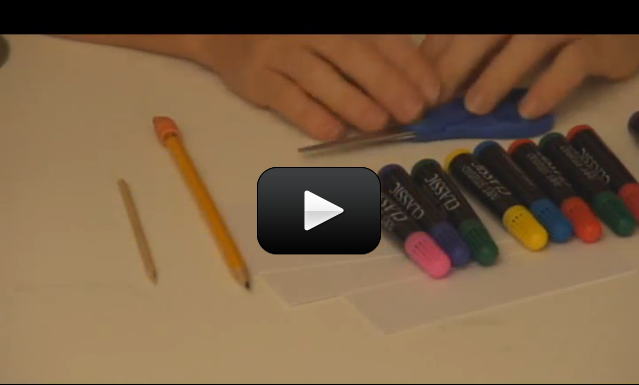There are three primary colors of light are red, green, and blue. The three primary colors of paint are red, yellow, and blue (I know it's actually cyan, yellow, and magenta, which we'll get to in more detail later, but for now just stick with me and think of the primary colors of paint as red-yellow-blue and I promise it will all make sense in the end).
Most kids understand how yellow paint and blue paint make green paint, but are totally stumped when red light and green light mix to make yellow light. The difference is that we're mixing light, not paint.
Lots of science textbooks still have this experiment listed under how to mix light: "Stir together one of red water and one glass of green water (dyed with food coloring) to get a glass of yellow water." Hmmm... the result I get is a yucky greenish-brown color. What happened?
The reason you can't mix green and red water to get yellow is that you’re essentially still mixing paint, not light. But don’t take our word for it – test it out for yourself with this super-fast light experiment on mixing colors.
Materials:
Please login or register to read the rest of this content.
Most kids understand how yellow paint and blue paint make green paint, but are totally stumped when red light and green light mix to make yellow light. The difference is that we're mixing light, not paint.
Lots of science textbooks still have this experiment listed under how to mix light: "Stir together one of red water and one glass of green water (dyed with food coloring) to get a glass of yellow water." Hmmm... the result I get is a yucky greenish-brown color. What happened?
The reason you can't mix green and red water to get yellow is that you’re essentially still mixing paint, not light. But don’t take our word for it – test it out for yourself with this super-fast light experiment on mixing colors.
Materials:
- pair of scissors
- crayons
- sharp wood pencil or wood skewer
- index cards
- drill (optional)
Please login or register to read the rest of this content.


It’s going to look a little muddy unless you spin it really fast and have just the right shades of red and green. The best way to get yellow is using red light and green light on a white wall in a dark room.
Red and green didn’t make yellow when I spun them for some reason. Maybe I used the wrong shades, or didn’t spin them fast enough? Mine made a sort of pale green bordered by red.
Oops! The wrong video is here, I’ll get that fixed. Thanks for your eagle eye!
Is this supposed to have the same video as the following lesson?